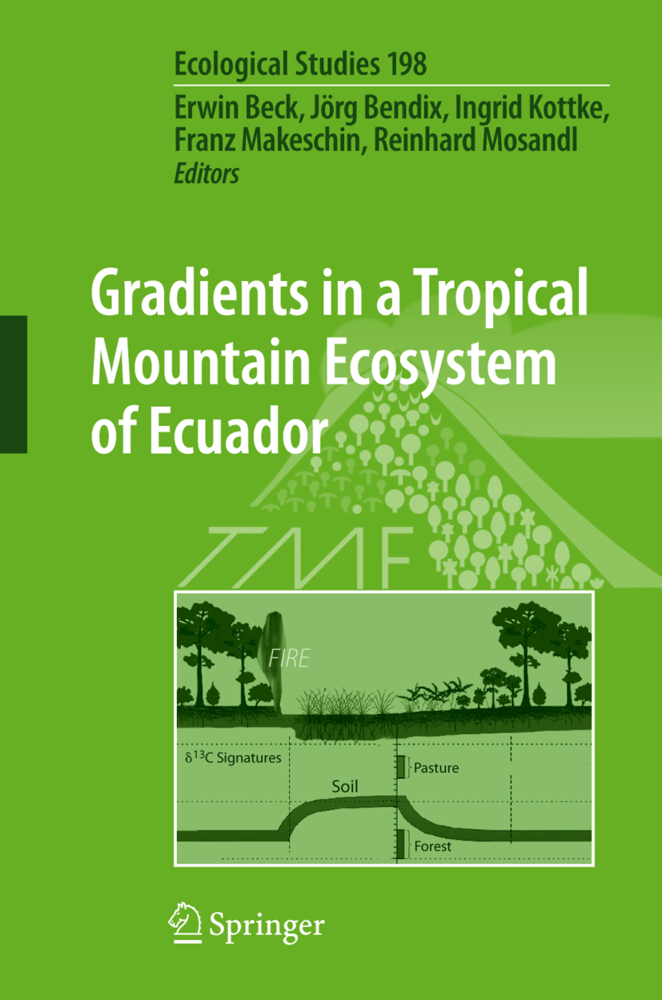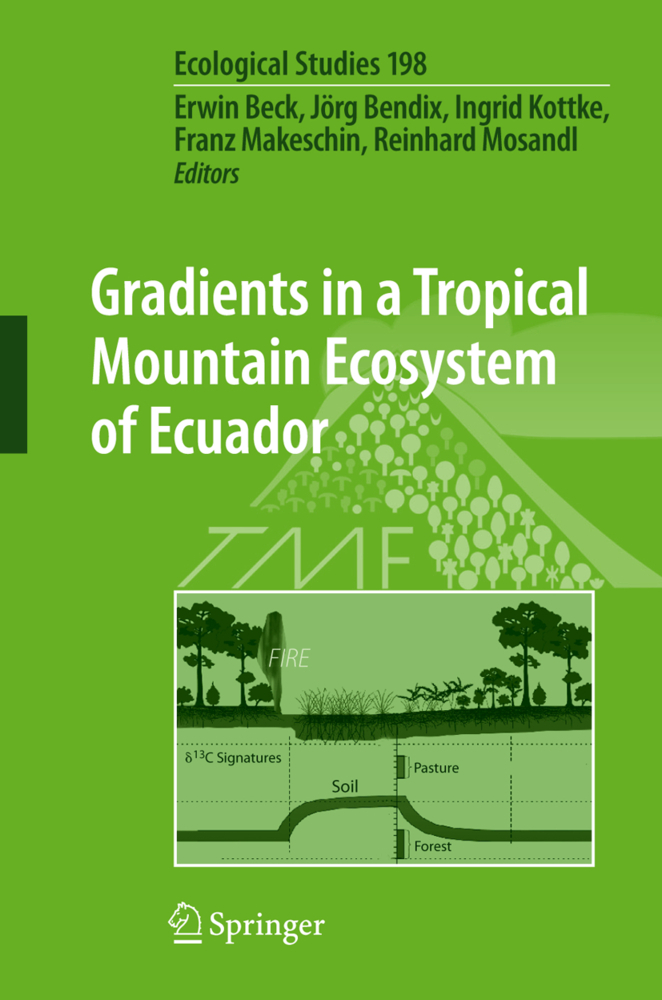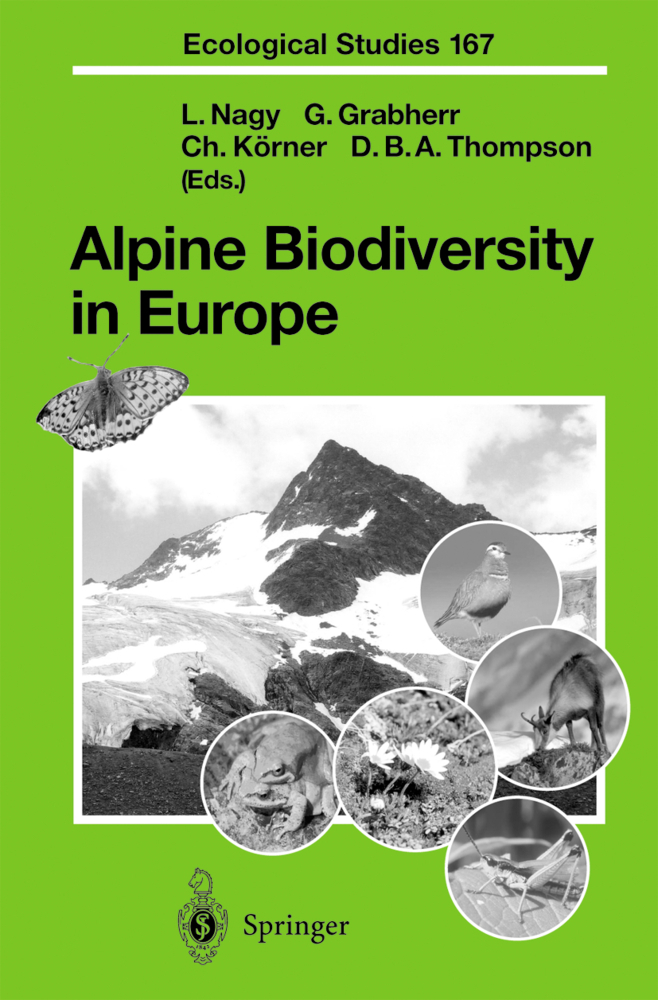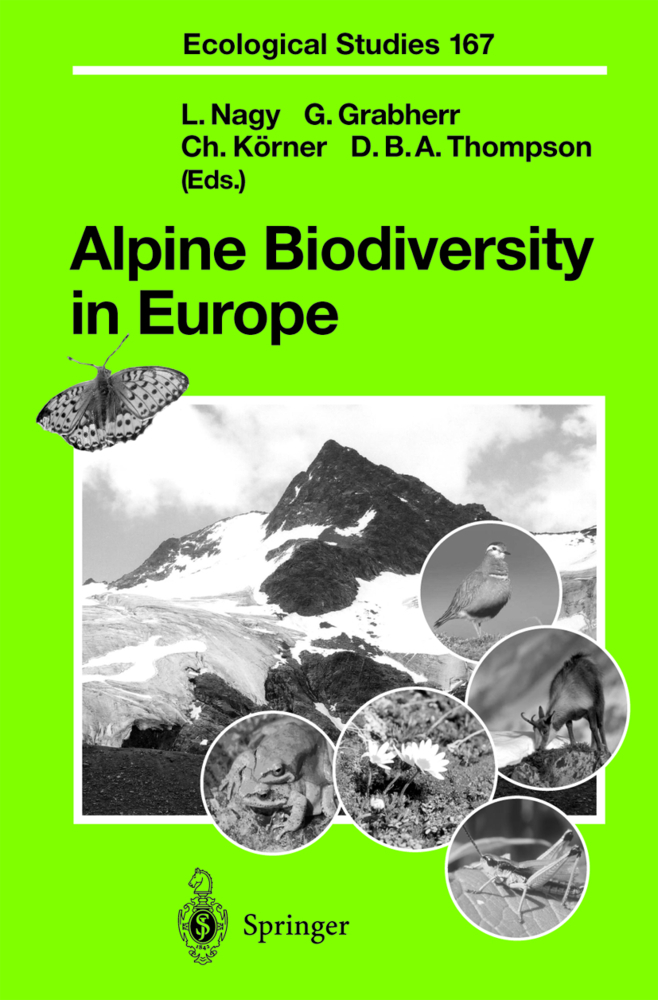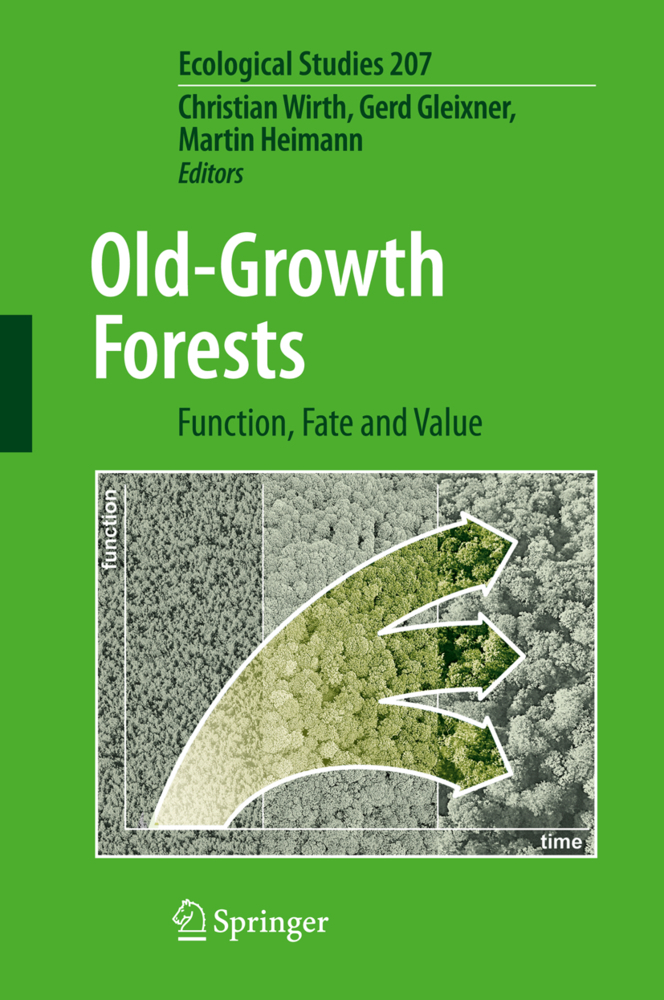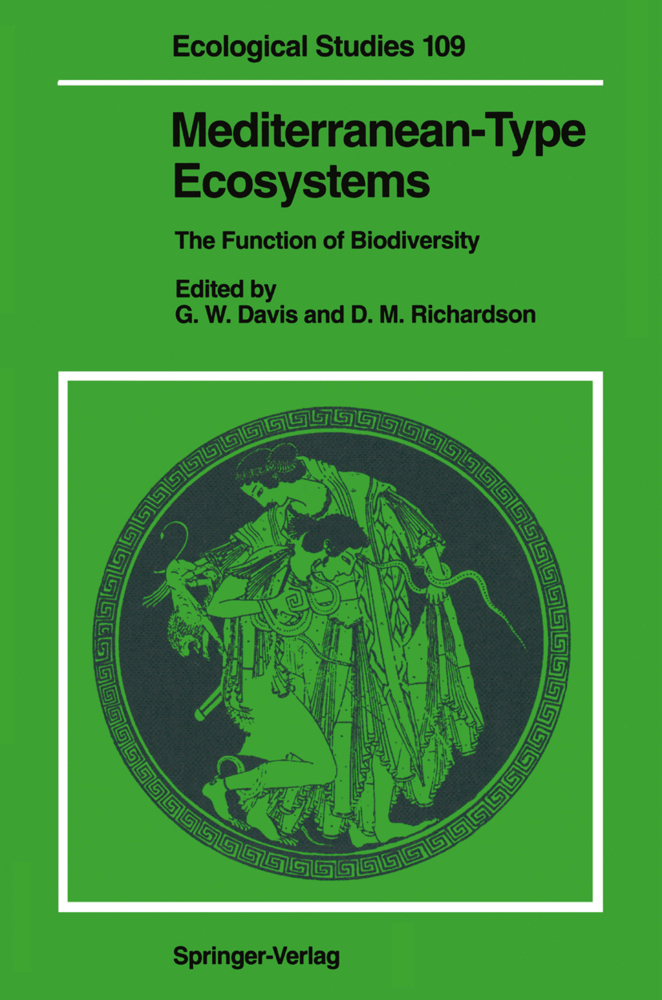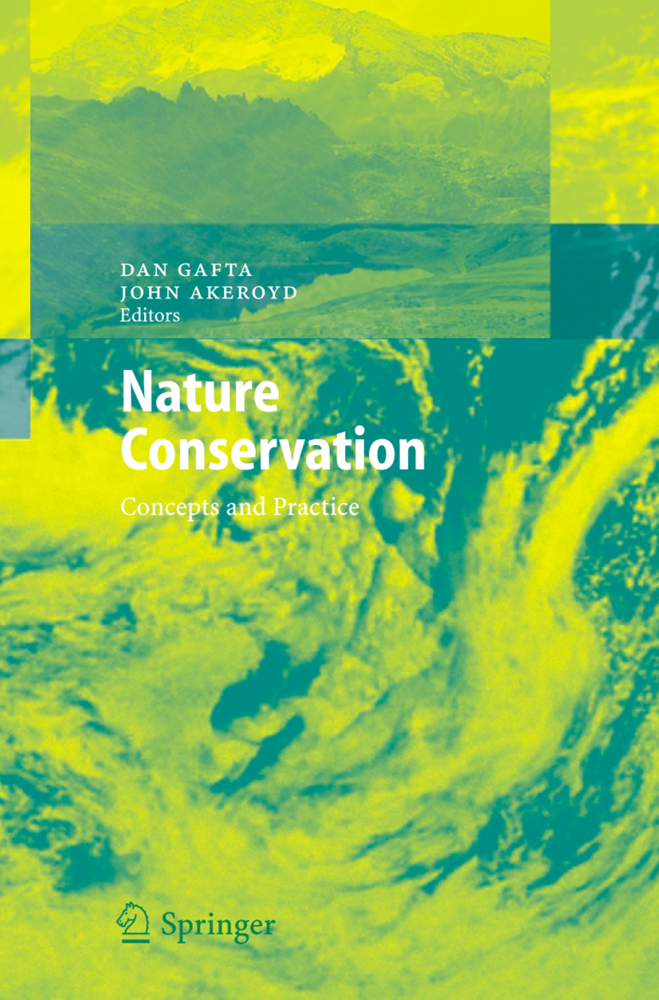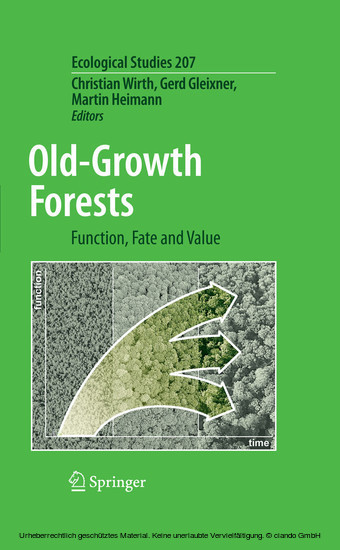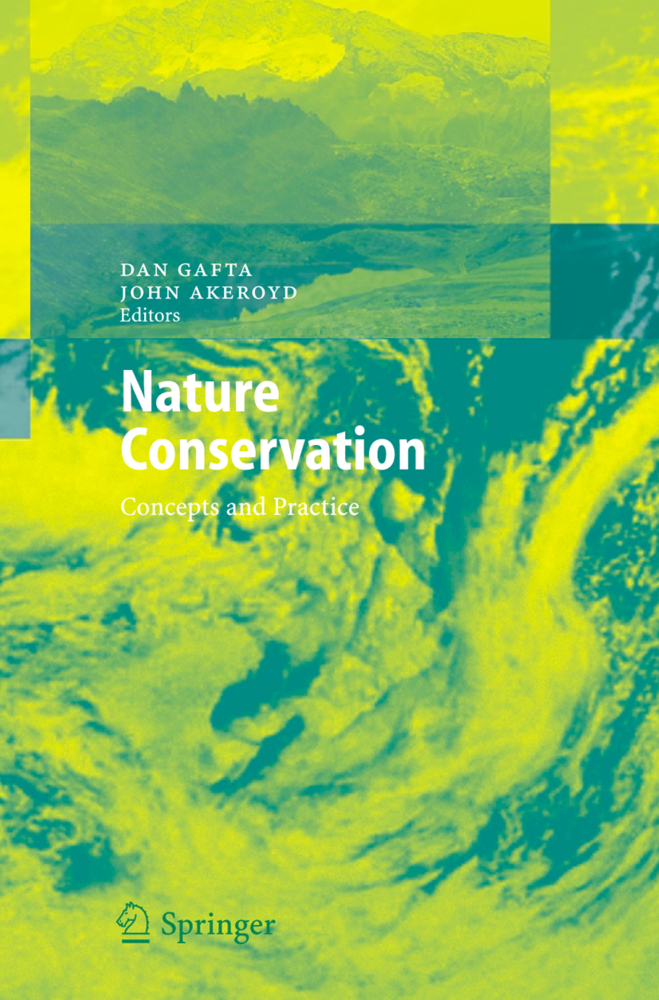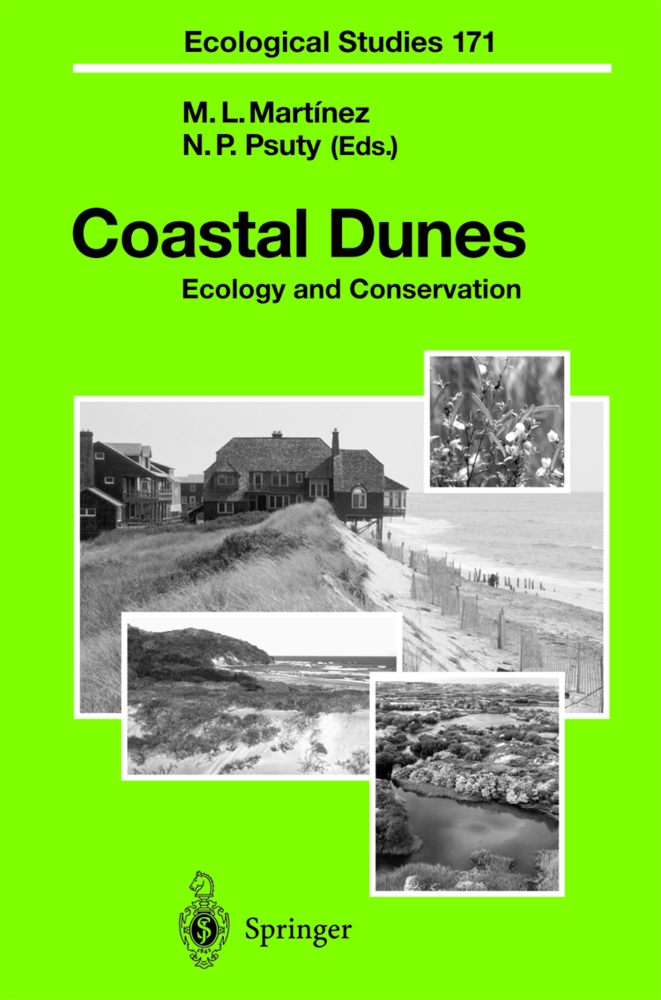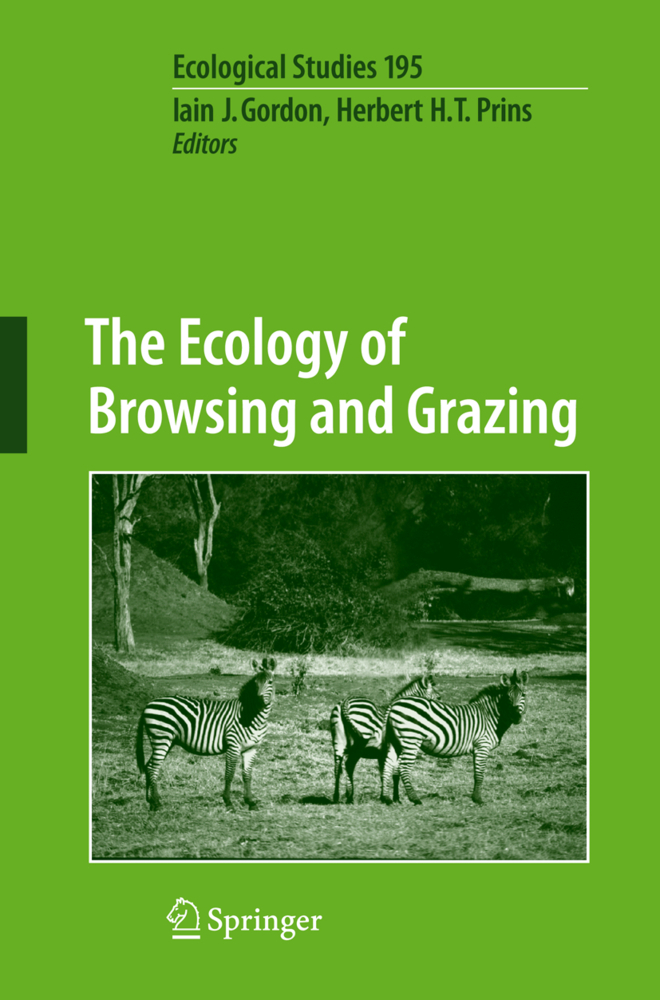Gradients in a Tropical Mountain Ecosystem of Ecuador
Gradients in a Tropical Mountain Ecosystem of Ecuador
A tropical mountain ecosystem in one of the "hottest" biodiversity hotspots worldwide was investigated by some 30 research teams of numerous disciplines in the natural and social sciences. Ecosystem analysis followed two gradients: an altitudinal gradient and a gradient of land-use intensity and ecosystem regeneration, respectively.
This volume addresses a multitude of ecologically relevant aspects: macro- and microclimate; physics, chemistry and biology of soils; water relations, matter turnover and nutrient availability; plant growth and biomass partitioning; floral composition and plant life forms; vegetation structure and dynamics; organismic interactions, diversity and population biology of birds, moths and microarthropods; forest management, and reforestation with indigenous species; ethnobotanical and social aspects. New hypotheses are presented with regard to biodiversity and ecosystem functioning, as well as sustainable management of an ecosystem in a biodiversity hotspot.
The Ecosystem (Reserva Biológica San Francisco)
Mountain Rain Forests in Southern Ecuador as a Hotspot of Biodiversity - Limited Knowledge and Diverging PatternsThe People Settled Around Podocarpus National Park
Ecuador Suffers the Highest Deforestation Rate in South America
Methodological Challenges of a Megadiverse Ecosystem
Gradients in Ecosystem Analysis
Investigating Gradients in Ecosystem Analysis
The Investigated Gradients
The Altitudinal Gradient
Climate
Soils Along the Altitudinal Transect and in Catchments
Flora and Fungi: Composition and Function
Flora and Fungi: Composition and Function
Flora and Fungi: Composition and Function
Flora and Fungi: Composition and Function
Flora and Fungi: Composition and Function
Fauna: Composition and Function
Fauna: Composition and Function
Fauna: Composition and Function
Fauna: Composition and Function
Water Relations
Nutrient Status and Fluxes at the Field and Catchment Scale
Biotic Soil Activities
Altitudinal Changes in Stand Structure and Biomass Allocation of Tropical Mountain Forests in Relation to Microclimate and Soil Chemistry
Stand Structure, Transpiration Responses in Trees and Vines and Stand Transpiration of Different Forest Types Within the Mountain Rainforest
Plant Growth Along the Altitudinal Gradient - Role of Plant Nutritional Status, Fine Root Activity, and Soil Properties
Spatial Heterogeneity Patterns - a Comparison Between Gorges and Ridges in the Upper Part of an Evergreen Lower Montane Forest
The Unique Purdiaea nutans Forest of Southern Ecuador - Abiotic Characteristics and Cryptogamic Diversity
Climate Variability
Growth Dynamics of Trees in Tropical Mountain Ecosystems
Temporal Heterogeneities - Matter Deposition from RemoteAreas
Gradients of Disturbance
Gap Dynamics in a Tropical Lower Montane Forest in South Ecuador
Landslides as Important Disturbance Regimes - Causes and Regeneration
Sustainable and Non-Sustainable Use of Natural Resources by Indigenous and Local Communities
Natural Forest Management in Neotropical Mountain Rain Forests - An Ecological Experiment
Permanent Removal of the Forest: Construction of Roads and Power Supply Lines
Forest Clearing by Slash and Burn
Gradients of Regeneration
Gradients and Patterns of Soil Physical Parameters at Local, Field and Catchment Scales
Visualization and Analysis of Flow Patterns and Water Flow Simulations in Disturbed and Undisturbed Tropical Soils
Pasture Management and Natural Soil Regeneration
Succession Stages of Vegetation Regeneration: Secondary Tropical Mountain Forests
Reforestation of Abandoned Pastures: Seed Ecology of Native Species and Production of Indigenous Plant Material
Reforestation of Abandoned Pastures: Silvicultural Means to Accelerate Forest Recovery and Biodiversity
Successional Stages of Faunal Regeneration - A Case Study on Megadiverse Moths
Synopsis
Gradients in a Tropical Mountain Ecosystem - a Synthesis.
Beck, Erwin
Bendix, Jörg
Kottke, Ingrid
Makeschin, Franz
Mosandl, Reinhard
| ISBN | 978-3-642-09266-4 |
|---|---|
| Artikelnummer | 9783642092664 |
| Medientyp | Buch |
| Copyrightjahr | 2010 |
| Verlag | Springer, Berlin |
| Umfang | XIII, 525 Seiten |
| Abbildungen | XIII, 525 p. |
| Sprache | Englisch |

